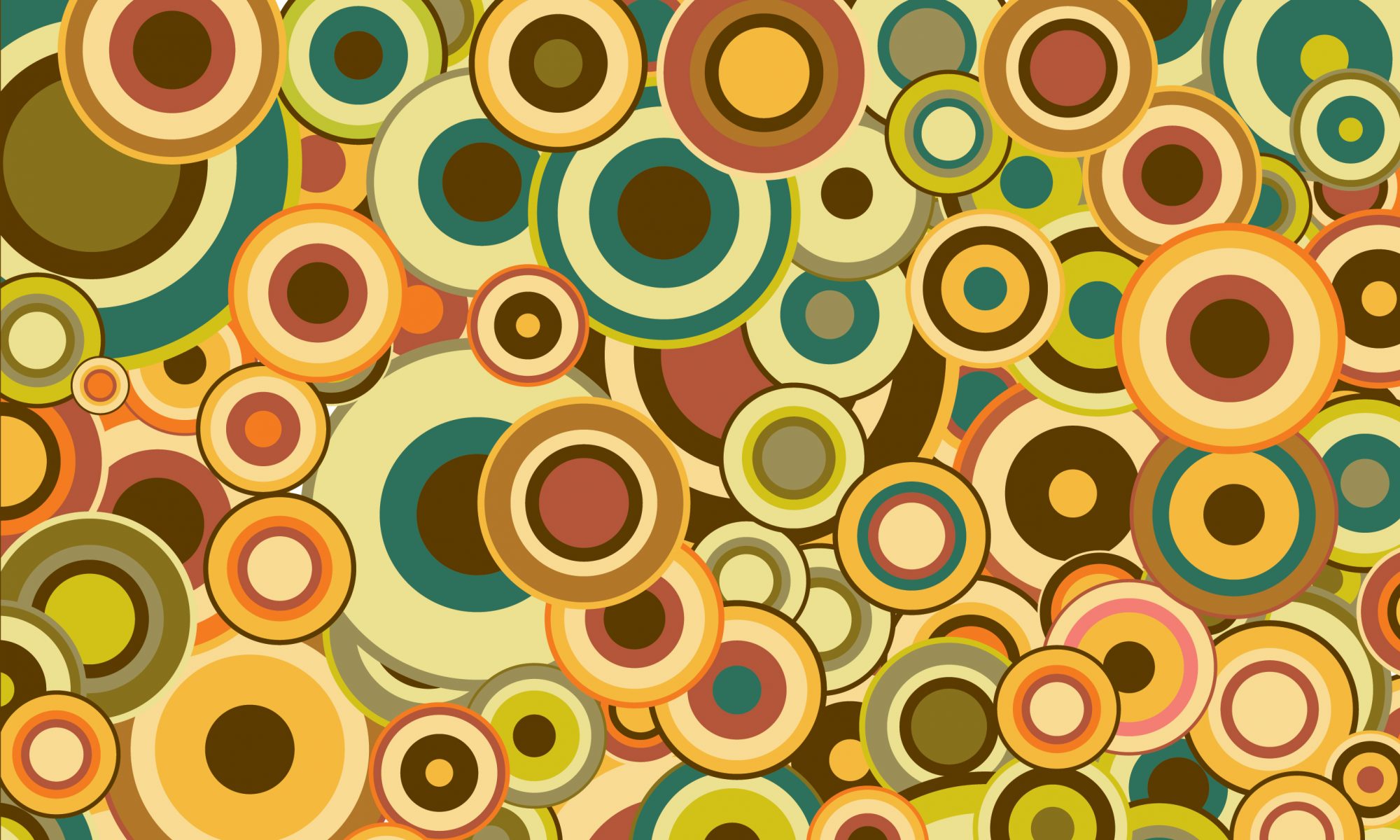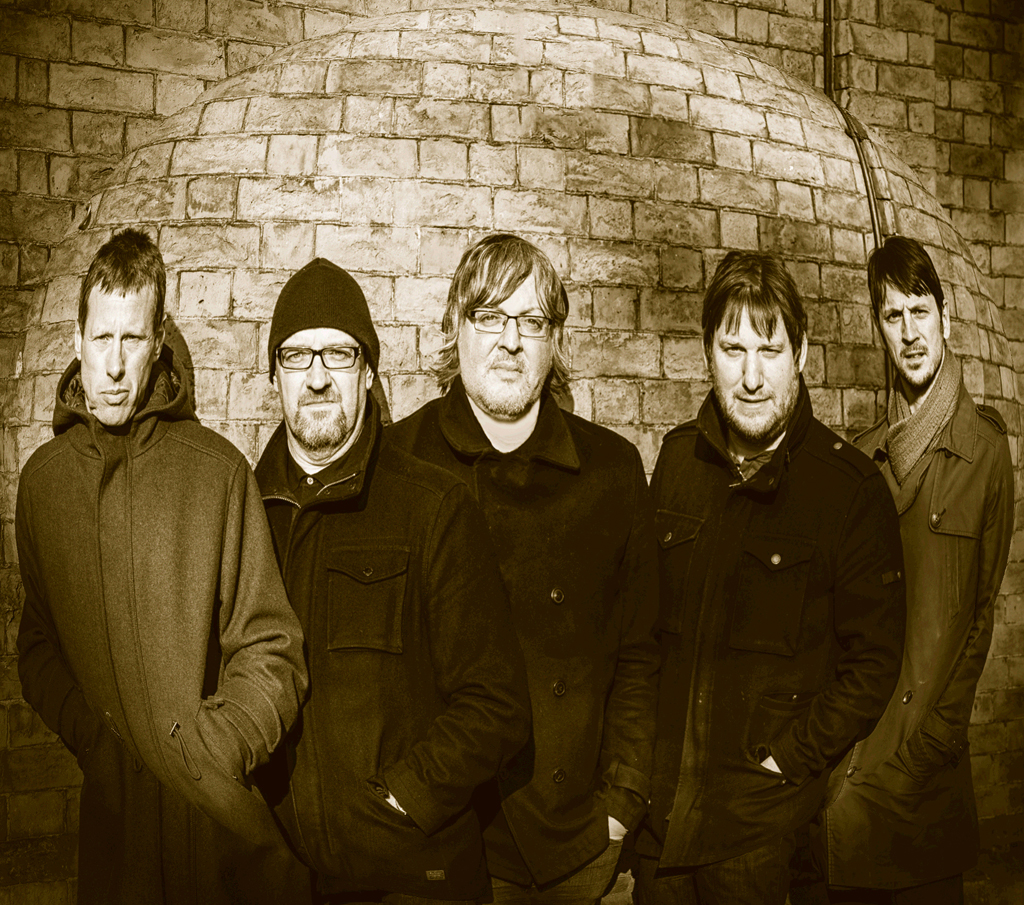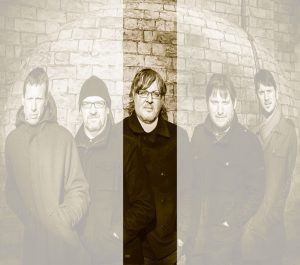So many bands like ours will sit here and eulogise about The Beatles, The Stone Roses and, latterly I suppose, Oasis. And, whilst I adore the sound of The Fab Four, particularly from ‘Help’ onwards, and remember with great fondness following The Roses all over the country and queuing up at Eastern Bloc Records in Manchester for a copy of THAT debut album, I’ve got to say my core musical influences do lie elsewhere.
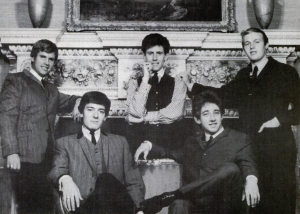
I think it triggered my life-long love of three-part harmony. Graham Nash, Allan Clarke and Tony Hicks (along with fellow Salford/ Manc lads, The Bee Gees), are the past-masters at the lost art of three-part harmony. For aural proof, try going beyond the obvious Hollies tracks like ‘On A Carousel’ and ‘Bus Stop’, and seek out their criminally underrated late 60’s albums ‘For Certain Because’, ‘Evolution’ and ‘Butterfly’
“Of course, they learned the art of close harmony from the inventors of that
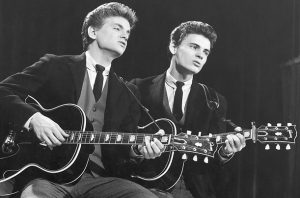
form, the magnificent Everly Brothers. What can you say about Phil and Don that hasn’t already been said a million times over. They may be an obvious choice, but so what? To my mind, they are possibly the most influential force on classic pop music (alongside Buddy Holly) as, without them, there would be no Beatles, no Hollies, no Simon & Garfunkel and so on.
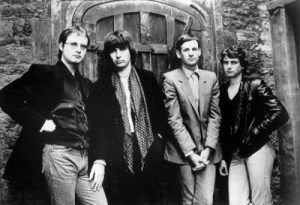 “I also had a big musical crush on XTC as a kid, which started – perhaps obviously with their big hits ‘Making Plans for Nigel’, ‘Sgt. Rock’ and ‘Senses Working Overtime’. Andy Partridge is a tunesmith without parallel, for my money. Particularly, in his alter ego of Sir John Johns, the leader of the fictitious 1960’s psychedelic band, The Dukes of Stratosphear. Listen to the ‘Psonic Psunspot’ album (which actually came out in 1987, but reaks of 1967), produced by legendary Roses’ mentor, John Leckie. The 25 O’Clock mini album (released on April Fool’s Day 1985), is also a must-listen. It’s pastiche at its most complimentary and exquisite, shifting elegantly from The Hollies, to Syd Barrett era Floyd, The Yardbirds, The Move, Traffic and The Kinks all in one glorious half-hour blast of timeless, British Psych Pop.
“I also had a big musical crush on XTC as a kid, which started – perhaps obviously with their big hits ‘Making Plans for Nigel’, ‘Sgt. Rock’ and ‘Senses Working Overtime’. Andy Partridge is a tunesmith without parallel, for my money. Particularly, in his alter ego of Sir John Johns, the leader of the fictitious 1960’s psychedelic band, The Dukes of Stratosphear. Listen to the ‘Psonic Psunspot’ album (which actually came out in 1987, but reaks of 1967), produced by legendary Roses’ mentor, John Leckie. The 25 O’Clock mini album (released on April Fool’s Day 1985), is also a must-listen. It’s pastiche at its most complimentary and exquisite, shifting elegantly from The Hollies, to Syd Barrett era Floyd, The Yardbirds, The Move, Traffic and The Kinks all in one glorious half-hour blast of timeless, British Psych Pop.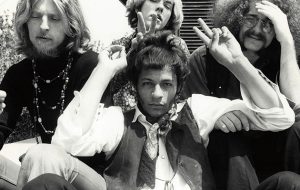 The songs of Arthur Lee and Bryan MacLean (the writer of ‘Alone Again Or’, possibly my favourite tune of all time) are always packed with imagination and innovation, always a little unpredictable and – save for You Set The Scene’ on the untouchable ‘Forever Changes’ and the 19-minute experimental track ‘Revelation’ on ‘Da Capo’ – short. What’s more, their guitarist on their practically undiscovered fourth album, ‘Four Sail’ was Jay Donnellan who, in addition to being a great player, was a Manc. So what’s not to love about Love?
The songs of Arthur Lee and Bryan MacLean (the writer of ‘Alone Again Or’, possibly my favourite tune of all time) are always packed with imagination and innovation, always a little unpredictable and – save for You Set The Scene’ on the untouchable ‘Forever Changes’ and the 19-minute experimental track ‘Revelation’ on ‘Da Capo’ – short. What’s more, their guitarist on their practically undiscovered fourth album, ‘Four Sail’ was Jay Donnellan who, in addition to being a great player, was a Manc. So what’s not to love about Love?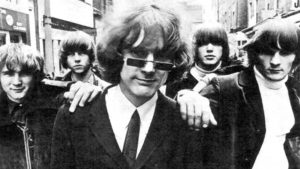
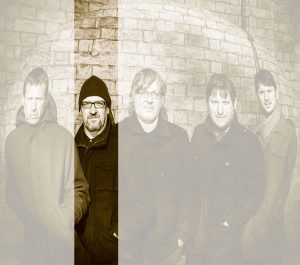 Neil – Bassplayer and all round tech wizard, share with us his musical influences.
Neil – Bassplayer and all round tech wizard, share with us his musical influences.
People often ask me who influences my bass playing, expecting to hear the names of luminaries such as Carol Kaye, Paul McCartney, Bill Wyman and John Entwistle. Now don’t misinterpret me, Ms Kaye, Macca, Bill and John are shining examples to any bass player learning the instrument that it is a musical instrument and not a percussion instrument (as many modern bass players seem to believe). Indeed, I love the Beatles, the Buffalo Springfield, the Byrds, the Hollies, the Beach Boys. I also love the Clash, the Ramones, the Smiths, the La’s, James, Belle & Sebastian, Air and, of course, the Roses. All of whom no doubt influence my bass playing in some way.
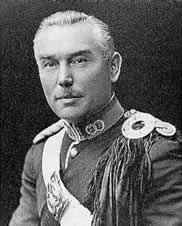 A Flügel is a similar pitch to a Trumpet but has a way cooler, mellower sound (I’m still know to occasionally have a blow too!). Playing in brass bands, as well as being sex education, actually taught me something about music and composition!
A Flügel is a similar pitch to a Trumpet but has a way cooler, mellower sound (I’m still know to occasionally have a blow too!). Playing in brass bands, as well as being sex education, actually taught me something about music and composition!
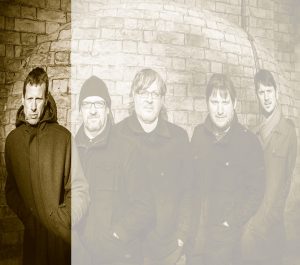 Michael orem ipsum lorem ipsum lorem ipsum orem ipsum lorem ipsum lorem ipsum orem ipsum lorem ipsum lorem ipsum orem ipsum lorem ipsum lorem ipsum orem ipsum lorem ipsum lorem ipsum orem ipsum lorem ipsum lorem ipsum orem ipsum lorem ipsum lorem ipsum orem ipsum lorem ipsum lorem ipsum orem ipsum lorem ipsum lorem ipsumorem ipsum lorem ipsum lorem ipsum orem ipsum lorem ipsum lorem ipsum orem ipsum lorem ipsum lorem ipsum orem ipsum lorem ipsum lorem ipsum orem ipsum lorem ipsum lorem ipsum orem ipsum lorem ipsum lorem ipsum orem ipsum lorem ipsum lorem ipsum orem ipsum lorem ipsum lorem ipsum orem ipsum lorem ipsum lorem ipsum orem ipsum lorem ipsum lorem ipsum orem ipsum lorem ipsum lorem ipsum orem ipsum lorem ipsum lorem ipsum orem ipsum lorem ipsum lorem ipsum orem ipsum lorem ipsum lorem ipsum orem ipsum lorem ipsum lorem ipsum
Michael orem ipsum lorem ipsum lorem ipsum orem ipsum lorem ipsum lorem ipsum orem ipsum lorem ipsum lorem ipsum orem ipsum lorem ipsum lorem ipsum orem ipsum lorem ipsum lorem ipsum orem ipsum lorem ipsum lorem ipsum orem ipsum lorem ipsum lorem ipsum orem ipsum lorem ipsum lorem ipsum orem ipsum lorem ipsum lorem ipsumorem ipsum lorem ipsum lorem ipsum orem ipsum lorem ipsum lorem ipsum orem ipsum lorem ipsum lorem ipsum orem ipsum lorem ipsum lorem ipsum orem ipsum lorem ipsum lorem ipsum orem ipsum lorem ipsum lorem ipsum orem ipsum lorem ipsum lorem ipsum orem ipsum lorem ipsum lorem ipsum orem ipsum lorem ipsum lorem ipsum orem ipsum lorem ipsum lorem ipsum orem ipsum lorem ipsum lorem ipsum orem ipsum lorem ipsum lorem ipsum orem ipsum lorem ipsum lorem ipsum orem ipsum lorem ipsum lorem ipsum orem ipsum lorem ipsum lorem ipsum
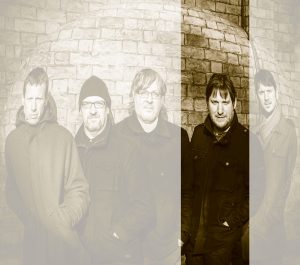 Adam lorem ipsum lorem ipsum lorem ipsum orem ipsum lorem ipsum lorem ipsum orem ipsum lorem ipsum lorem ipsum orem ipsum lorem ipsum lorem ipsum orem ipsum lorem ipsum lorem ipsum orem ipsum lorem ipsum lorem ipsum orem ipsum lorem ipsum lorem ipsum orem ipsum lorem ipsum lorem ipsum orem ipsum lorem ipsum lorem ipsumorem ipsum lorem ipsum lorem ipsum orem ipsum lorem ipsum lorem ipsum orem ipsum lorem ipsum lorem ipsum orem ipsum lorem ipsum lorem ipsum orem ipsum lorem ipsum lorem ipsum orem ipsum lorem ipsum lorem ipsum orem ipsum lorem ipsum lorem ipsum orem ipsum lorem ipsum lorem ipsum orem ipsum lorem ipsum lorem ipsum orem ipsum lorem ipsum lorem ipsum orem ipsum lorem ipsum lorem ipsum orem ipsum lorem ipsum lorem ipsum orem ipsum lorem ipsum lorem ipsum orem ipsum lorem ipsum lorem ipsum orem ipsum lorem ipsum lorem ipsum
Adam lorem ipsum lorem ipsum lorem ipsum orem ipsum lorem ipsum lorem ipsum orem ipsum lorem ipsum lorem ipsum orem ipsum lorem ipsum lorem ipsum orem ipsum lorem ipsum lorem ipsum orem ipsum lorem ipsum lorem ipsum orem ipsum lorem ipsum lorem ipsum orem ipsum lorem ipsum lorem ipsum orem ipsum lorem ipsum lorem ipsumorem ipsum lorem ipsum lorem ipsum orem ipsum lorem ipsum lorem ipsum orem ipsum lorem ipsum lorem ipsum orem ipsum lorem ipsum lorem ipsum orem ipsum lorem ipsum lorem ipsum orem ipsum lorem ipsum lorem ipsum orem ipsum lorem ipsum lorem ipsum orem ipsum lorem ipsum lorem ipsum orem ipsum lorem ipsum lorem ipsum orem ipsum lorem ipsum lorem ipsum orem ipsum lorem ipsum lorem ipsum orem ipsum lorem ipsum lorem ipsum orem ipsum lorem ipsum lorem ipsum orem ipsum lorem ipsum lorem ipsum orem ipsum lorem ipsum lorem ipsum
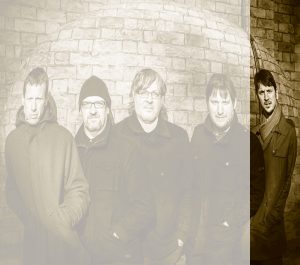 Mark lorem ipsum lorem ipsum lorem ipsum orem ipsum lorem ipsum lorem ipsum orem ipsum lorem ipsum lorem ipsum orem ipsum lorem ipsum lorem ipsum orem ipsum lorem ipsum lorem ipsum orem ipsum lorem ipsum lorem ipsum orem ipsum lorem ipsum lorem ipsum orem ipsum lorem ipsum lorem ipsum orem ipsum lorem ipsum lorem ipsumorem ipsum lorem ipsum lorem ipsum orem ipsum lorem ipsum lorem ipsum orem ipsum lorem ipsum lorem ipsum orem ipsum lorem ipsum lorem ipsum orem ipsum lorem ipsum lorem ipsum orem ipsum lorem ipsum lorem ipsum orem ipsum lorem ipsum lorem ipsum orem ipsum lorem ipsum lorem ipsum orem ipsum lorem ipsum lorem ipsum orem ipsum lorem ipsum lorem ipsum orem ipsum lorem ipsum lorem ipsum orem ipsum lorem ipsum lorem ipsum orem ipsum lorem ipsum lorem ipsum orem ipsum lorem ipsum lorem ipsum orem ipsum lorem ipsum lorem ipsum
Mark lorem ipsum lorem ipsum lorem ipsum orem ipsum lorem ipsum lorem ipsum orem ipsum lorem ipsum lorem ipsum orem ipsum lorem ipsum lorem ipsum orem ipsum lorem ipsum lorem ipsum orem ipsum lorem ipsum lorem ipsum orem ipsum lorem ipsum lorem ipsum orem ipsum lorem ipsum lorem ipsum orem ipsum lorem ipsum lorem ipsumorem ipsum lorem ipsum lorem ipsum orem ipsum lorem ipsum lorem ipsum orem ipsum lorem ipsum lorem ipsum orem ipsum lorem ipsum lorem ipsum orem ipsum lorem ipsum lorem ipsum orem ipsum lorem ipsum lorem ipsum orem ipsum lorem ipsum lorem ipsum orem ipsum lorem ipsum lorem ipsum orem ipsum lorem ipsum lorem ipsum orem ipsum lorem ipsum lorem ipsum orem ipsum lorem ipsum lorem ipsum orem ipsum lorem ipsum lorem ipsum orem ipsum lorem ipsum lorem ipsum orem ipsum lorem ipsum lorem ipsum orem ipsum lorem ipsum lorem ipsum
With my father a ‘cellist in the two great Northwest orchestras, the Halle Orchestra and the Royal Liverpool Philharmonic Orchestra, and my mother a violin teacher, music was less an option and more ‘that’s just what we do’. In my early years, it was a way of life. I recall, as a kid, running around the Royal Liverpool Philharmonic Hall, hiding in the rows of seats, while my dad rehearsed with the orchestra, watching, listening. If I wasn’t at rehearsals, I was subjected to the (less than dulcet) tones of beginner violinists coming from our front room. Although I didn’t realise it then, I saw some pretty inspirational performances from my hiding place in that hall. I even remember conducting the orchestra during one concert. The conductor turned to the audience and asked if there was any child who wanted a go. 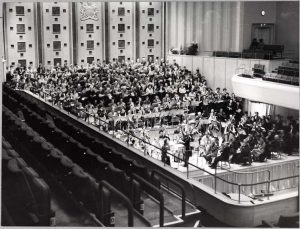 My dad had prepared me for this question and my hand was up the second the conductor turned round. If I close my eyes, I can still picture myself, on the rostrum, baton in hand in front of that great orchestra. I reckon that’s where it started for me. And so it was, playing the cello came second only to school, whether I liked it or not.
My dad had prepared me for this question and my hand was up the second the conductor turned round. If I close my eyes, I can still picture myself, on the rostrum, baton in hand in front of that great orchestra. I reckon that’s where it started for me. And so it was, playing the cello came second only to school, whether I liked it or not.
With my parents all but banning pop music in our house, as a kid my only outlet into the world of pop was late night radio. While the house slept, I would scan the waves looking for anything that caught my ear; a beautiful melody, a catchy riff, a funky bass line or just something I’d never experienced before. Consequently, my musical influences became completely varied – from one extreme to another.
Having spent so much time with orchestras, joining The Cyrcles has been such a breath of fresh air for me and rekindled my love for the cello. Jon’s writing is so full of melodies, counter melodies and harmonies and the strings blend in perfectly. The songs are really spacious in a way that allows me to play around with melodic riffs, sustained harmonies and my classical influences.
 Natalielorem ipsum lorem ipsum lorem ipsum orem ipsum lorem ipsum lorem ipsum orem ipsum lorem ipsum lorem ipsum orem ipsum lorem ipsum lorem ipsum orem ipsum lorem ipsum lorem ipsum orem ipsum lorem ipsum lorem ipsum orem ipsum lorem ipsum lorem ipsum orem ipsum lorem ipsum lorem ipsum orem ipsum lorem ipsum lorem ipsumorem ipsum lorem ipsum lorem ipsum orem ipsum lorem ipsum lorem ipsum orem ipsum lorem ipsum lorem ipsum orem ipsum lorem ipsum lorem ipsum orem ipsum lorem ipsum lorem ipsum orem ipsum lorem ipsum lorem ipsum orem ipsum lorem ipsum lorem ipsum orem ipsum lorem ipsum lorem ipsum orem ipsum lorem ipsum lorem ipsum orem ipsum lorem ipsum lorem ipsum orem ipsum lorem ipsum lorem ipsum orem ipsum lorem ipsum lorem ipsum orem ipsum lorem ipsum lorem ipsum orem ipsum lorem ipsum lorem ipsum orem ipsum lorem ipsum lorem ipsum
Natalielorem ipsum lorem ipsum lorem ipsum orem ipsum lorem ipsum lorem ipsum orem ipsum lorem ipsum lorem ipsum orem ipsum lorem ipsum lorem ipsum orem ipsum lorem ipsum lorem ipsum orem ipsum lorem ipsum lorem ipsum orem ipsum lorem ipsum lorem ipsum orem ipsum lorem ipsum lorem ipsum orem ipsum lorem ipsum lorem ipsumorem ipsum lorem ipsum lorem ipsum orem ipsum lorem ipsum lorem ipsum orem ipsum lorem ipsum lorem ipsum orem ipsum lorem ipsum lorem ipsum orem ipsum lorem ipsum lorem ipsum orem ipsum lorem ipsum lorem ipsum orem ipsum lorem ipsum lorem ipsum orem ipsum lorem ipsum lorem ipsum orem ipsum lorem ipsum lorem ipsum orem ipsum lorem ipsum lorem ipsum orem ipsum lorem ipsum lorem ipsum orem ipsum lorem ipsum lorem ipsum orem ipsum lorem ipsum lorem ipsum orem ipsum lorem ipsum lorem ipsum orem ipsum lorem ipsum lorem ipsum
